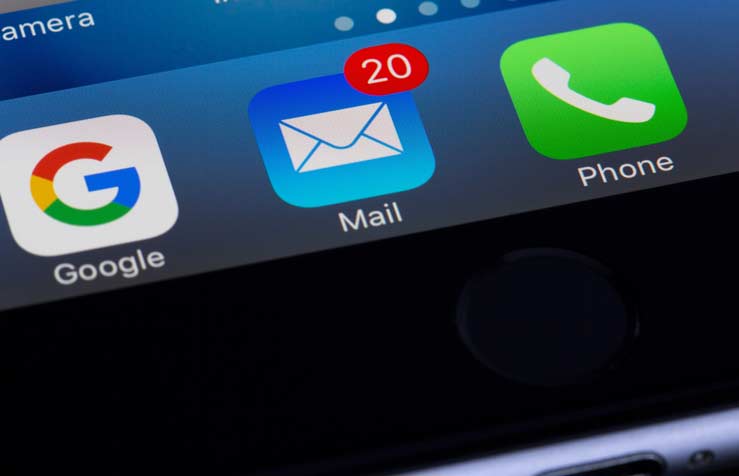Tips To Keep Your Email Safe

Following on from my previous posts about protecting your privacy and staying safe on the internet (both personally and your business), I am going to write about Email security!
This is probably the number one place where people are being affected. Here are a few pointers to help you. Even just remembering these should keep you safe.
1. It is ok to open ANY email (even an email in a spam folder), however it is NOT OK to click LINKS inside the email or OPEN attachments inside emails. Whether it is a PDF attachment, WORD doc attachment or any other attachment… one single click on a malicious attachment can open up your computer, email, etc. to being hacked. Likewise with a MALICIOUS LINK that is inserted anywhere inside an email. It could be in the text of the email, hidden in the email signature/contact details or behind a button that is designed into the email. One click on that link, and you can be hacked! If you have not certified that an email safe and legitimate, then DON’T CLICK ON ANY LINK OR OPEN ANY ATTACHMENT INSIDE THE EMAIL!
2. One of the best ways to work out whether an email is genuine or not is by CHECKING THE ACTUAL SENDER ADDRESS. This usually can be found by going to the top left of your email and clicking into the section of the email where it has the EMAIL DETAILS / RECORDS (From, To, Date, Time, Subject, etc. ). Sometimes an email address is written in the email subject line or at the top or bottom of the email and when you see it you subconsciously think that that is the senders email and you think its safe, even though the scammers put it there to get you to think just that. By going to the email records in the top left, you can see who really sent you an email. There are 3 main things you have to look out for. Firstly, if its a email address that doesn’t match up with what is in the email and who its supposedly from (the email says its from centrelink but the address is centrelink1@hotmail or yahoo). Secondly, you have to be careful of email addresses that look like a legitimate business email address of a business you are familiar with (ato, gov, banks, auspost, etc.) but a few characters of the email are different (different spelling, wrong spelling, and extra number or letter, etc). And thirdly, you also have to be careful of any ALIAS EMAIL ADDRESSES. That is a superficial ‘legitimate looking’ email address that hides a ‘dodgy’ email address behind it. It is in the email records section where you can find out whether an email address is real or not by looking for the original sender address. One example would be like this… a scammer can send an email that is saying its from say Australia Post and the emails looks like info@austrayapost, you notice the small spelling difference and know it is fake. But sometimes the address is really proper, like it says info@auspost, but when you go to the email records, it could really just be an alias being used by another email like scammerperson123@gmail
Currently, ‘real looking’ email addresses and alias email addresses are the biggest issue tricking people and leading them to be hacked.
3. Following on from the last point, be careful of a suspicious email that is coming from a friend or business associate, your friend could have just been hacked, their contacts breached and now the hackers are sending out the virus to everyone on their contact list to spread the virus further. You should just be careful if the email seems different from what they would usually send. Whether it is the writing style or email layout or if they are requesting something from you that seems out of place, anything that is out of the ordinary (however small) is a big giveaway of scam emails. When using email on a daily basis, just having a sense of vigilance and being alert for anything unusual will keep you safe.
4. If you are worried about an email, just pick up the phone and call whoever it is purporting to be from to verify it is legitimate. Don’t call a number inside the email, but rather look on the internet for the company website or if it is personal then call the person and ask them. There is no harm in just checking. Better to do that than to be hacked.
5. Common sense. Just use common sense. I don’t mean that in any pretension way at all, cause i understand that not everyone knows how to use computers. I just mean trust your own sense, and ask yourself… “Is this suspicious?”
Message me if you ever have any concerns and I can try to help you.

